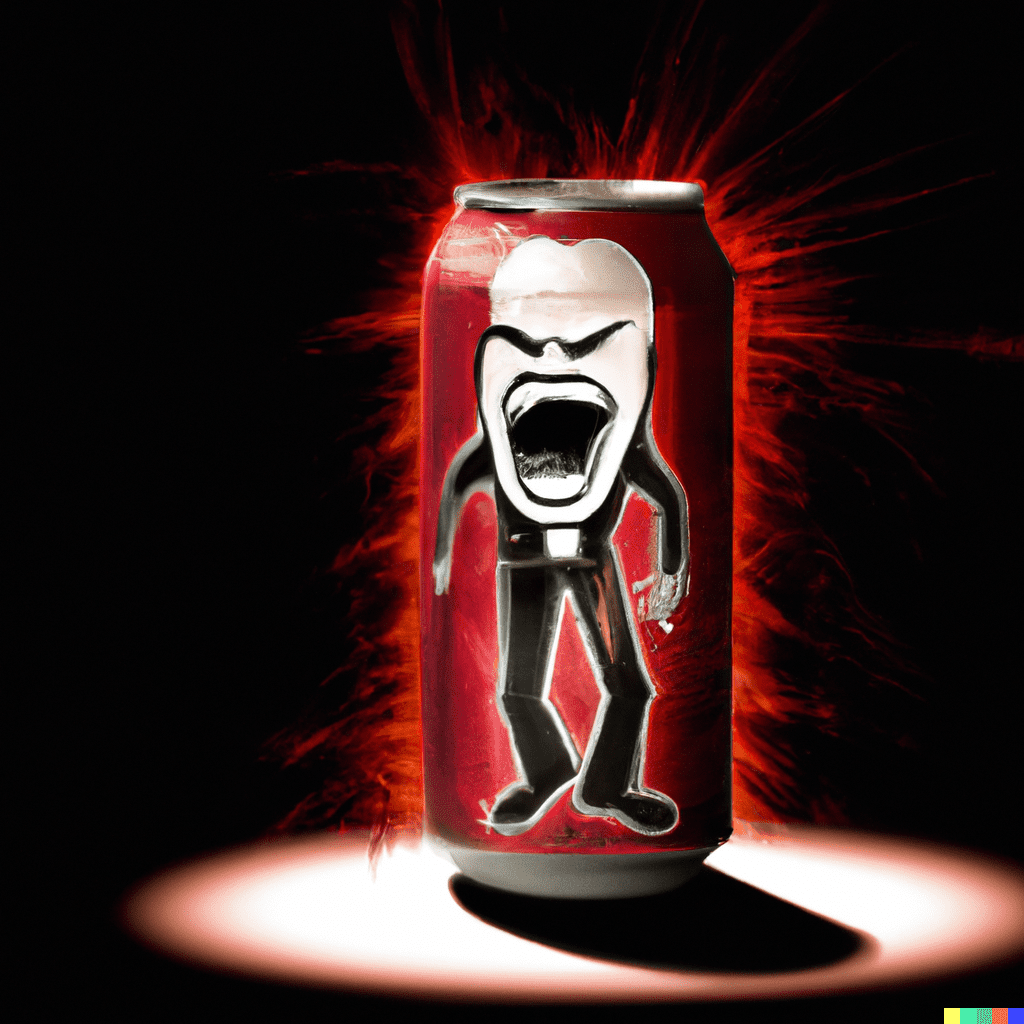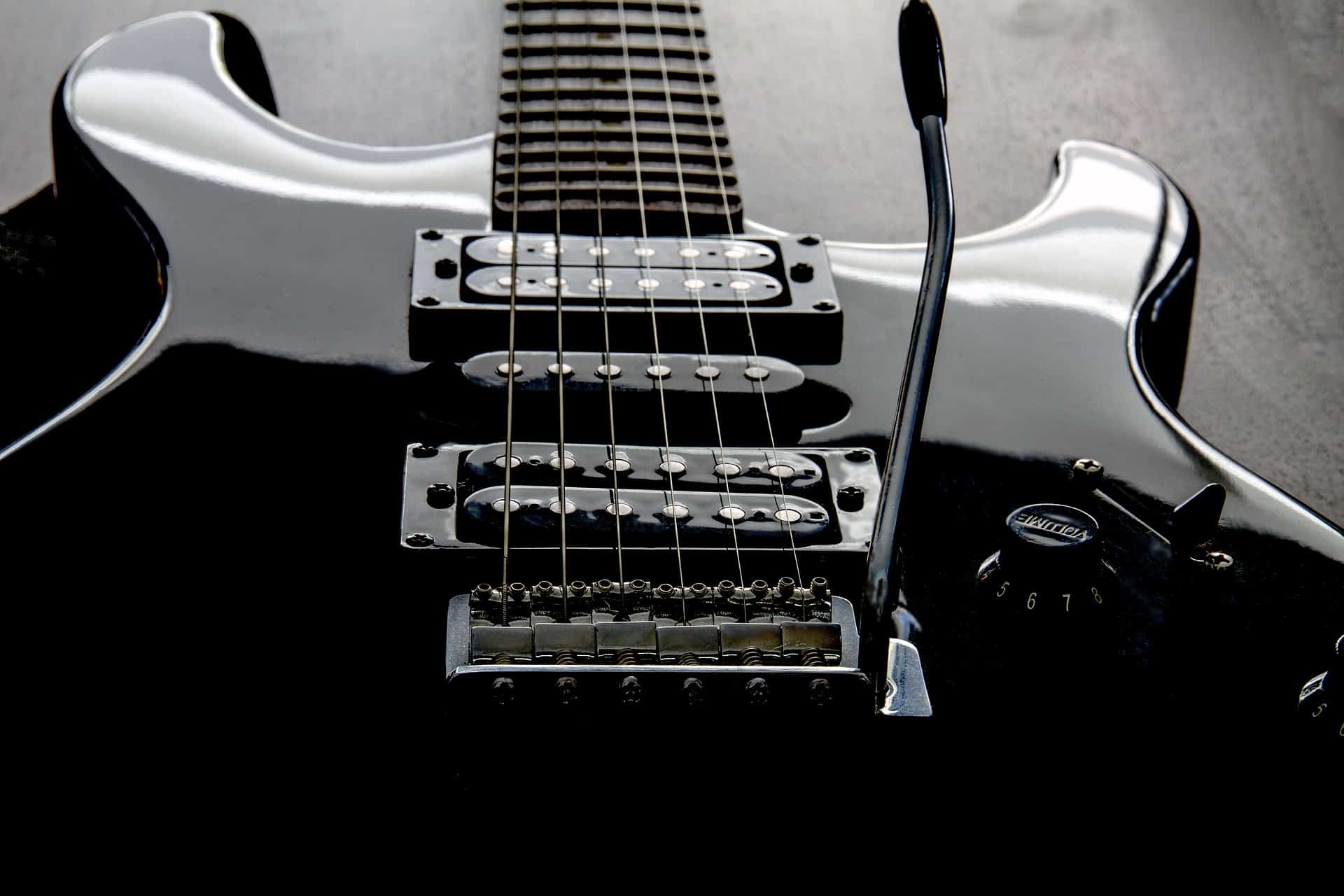Van Halen – Sammy Hagar for David Lee Roth
David Lee Roth (1978 – 1984)
- Number of Studio Albums – 6
- Last Album – 1984 (1984)
Sammy Hagar (1986 – 1995)
- Number of Studio Albums – 4
- First Album – 5150 (1986)
The Verdict – This one depends on who you ask. For early fans of Van Halen, they will always say the Roth era; while fans that came into Van Halen in the late 80’s or early 90’s will vote for Hagar. Under Roth, the band had fewer charting singles (7 Top 40 and 1 Top 10) but achieved Diamond certification (more than 10 million units sold twice with 1984 and Van Halen. Under Hagar, the band had 9 Top 40 hits and 2 Top 10 hits. On the album side, Hagar’s Van Halen hit #1 on every album but never achieved the Diamond status enjoyed by Roth’s Van Halen. This is a close call but probably leans toward Roth due to the overall album success.
Van Halen – Gary Cherone for Sammy Hagar
Sammy Hagar (1986 – 1995)
- Number of Studio Albums – 4
- Last Album – Balance (1995)
Gary Cherone (1996 – 1998)
- Number of Studio Albums – 1
- First Album – Van Halen III (1998)
The Verdict – This decision is not even close. Cherone appeared on one album – Van Halen III – and broke the streak of all 10 Van Halen albums selling at least 1 million copies. It was also the first time since 1981’s Fair Warning where a Van Halen album did not yield at least one Top 40 hit. Hagar was a hit making machine during his tenure with Van Halen. Hagar is the clear winner.
Motley Crue – John Corabi for Vince Neil
Vince Neil (1981 – 1992) Re-joined in 1997 for Generation Swine
- Number of Studio Albums – 5 (Neil re-joined for 3 more albums)
- Last Album – Dr. Feelgood (1992)
John Corabi (1992 – 1997)
- First Album – Motley Crue (1994)
The Verdict – Much like Cherone’s Van Halen vs. Hagar’s Van Halen, the John Corabi vs, Vince Neil discussion is not even close. Corabi’s lone album – Motley Crue – was the first Crue record that did not reach at least 1 million in sales. The first five albums with Vince Neil as lead singer sold more than 19 million copies. On the singles side, Vince Neil’s Motley Crue had 7 Top 40 hits, including 2 in the Top 10.
Journey – Steve Augeri / Arnel Pineda for Steve Perry
Steve Perry (1978 – 1996)
- Number of Studio Albums – 7
- Last Album – Trial by Fire (1996)
Steve Augeri (2000 – 2005)
- Number of Studio Albums – 2
- First Album – Arrival (2000)
Arnel Pineda (2008 – Present)
- Number of Studio Albums – 3
- First Album – Revelation (2008)
The Verdict – Steve Perry joined Journey in 1978 for their fourth album – Infinity – and took the band to new levels. Previously, Journey was a mildly successful band; with Perry, Journey became arena stars with 7 consecutive Platinum studio albums and a multi-Platinum live album (Captured). From 1979 to 1996, Journey collected 16 Top 40 hits, including 5 hits that reached the Top 10.
Steve Augeri replaced Perry and recorded two albums that failed to sell well and produced no Top 40 hits. Arnel Pinera took over for the Revelation album in 2008 and while the album sold more than 1 million copies, the band has never achieved the same level of success as they enjoyed under Perry. The choice here is Steve Perry but extra points to Pinera for remaining with the band for nearly 15 years and still recording currently with the release of their 2022 album titled Freedom.
Deep Purple – David Coverdale for Ian Gillan
Ian Gillan (1970 – 1973) Re-joined in 1984
- Number of Studio Albums – 4
- Last Album – Who Do We Think We Are
David Coverdale (1974-1976)
- Number of Studio Albums – 3
- First Album – Burn
The Verdict – Ian Gillan was part of what would be known as Deep Purple Mark II which found him replacing previous lead vocalist Rod Evans. Gillan’s debut in 1970 with Deep Purple In Rock solidified Gillan and Deep Purple as heavyweight contenders in hard rock. Gillan followed his debut with two classics that hit Number One in the UK – 1971’s Fireball and 1972’s Machine Head. Through four studio albums with Deep Purple, Gillan would create a hard rock legacy that took the world by storm. In addition, Gillan fronted the band with one of the most legendary live albums ever made – 1972’s Made in Japan.
Gillan’s replacement, David Coverdale (later of Whitesnake fame), was a very solid choice to fill the big shoes. Through three studio albums (Burn, Stormbringer and Come Taste the Band) and one live album (Made in Europe), the Coverdale-led Deep Purple (also known as Mk III) was very successful – especially in the UK. While it’s hard to dismiss the quality of Coverdale’s Deep Purple, Ian Gillan gets the nod here for not only laying the groundwork for one of the most successful hard rock bands of all-time but for creating some of the most memorable songs of the era.
Bad Company – Brian Howe for Paul Rodgers
Paul Rodgers (1974 – 1982)
- Number of Studio Albums – 6
- Last Album – Rough Diamonds
Brian Howe (1986 – 1992)
- Number of Studio Albums – 4
- First Album – Fame and Fortune
The Verdict – The Brian Howe version of Bad Company, while not a total failure, did not have the same results as the Paul Rodgers era. Howe’s tenure included 3 Gold certified albums in the US and also saw success in Canada (although there was no chart action in the UK). Howe even had three Top 40 hits in the US with “If You Needed Somebody,” “Walk Through Fire” and “How About That.” Under normal circumstances, that would be a pretty good showing over four albums. However, it certainly pales in comparison to the success Bad Company had with Paul Rodgers on lead vocals.
From 1974 – 1982, Bad Company released 6 Top 40 singles in the US (2 that hit the Top 10) and also achieved major success in Canada with three Top 10 singles. On the album side, the Rodgers-led Bad Company released four albums that sold at least 1 million copies (including the self titled debut Bad Company which has sold more than 5 million copies in the US alone). The verdict here is easy – Paul Rodgers was definitely the more successful frontman for Bad Company.
AC/DC – Brian Johnston for Bon Scott
Bon Scott (1975 – 1979)
- Number of Studio Albums – 5
- Last Album – Highway to Hell
Brian Johnston (1980 – Present)
- Number of Studio Albums – 11
- First Album – Back in Black
The Verdict – Bon Scott is without doubt one of the greatest hard rock vocalists of all time. His untimely death in 1980 cut short a career that would likely have made him one of the most famous lead singers in rock history. Instead, fans are left to wonder how far AC/DC might have gone with him fronting the band. Instead, the band moved on with a virtually unknown singer named Brian Johnston. The band’s debut with Johnston in 1980 – Back in Black – would become an international success going to Number One in Australia, UK, Switzerland, France and Canada as well as selling more than 25 million copies in the US.
In all, with Johnston as lead singer, AC/DC became one of the biggest bands in the world with 9 Platinum albums in the US and millions sold worldwide. This is a tough call because Johnston has a larger body of work and Bon Scott’s career was limited to only a handful of albums. This replacement is a case of replacing one legend with another.
Genesis – Phil Collins for Peter Gabriel
Peter Gabriel (1969 – 1974)
- Number of Studio Albums – 6
- Last Album – The Lamb Lies Down on Broadway
Phil Collins (1976 – 1991)
- Number of Studio Albums – 8
- First Album – A Trick of the Tail (as lead vocalist; was previously drummer for Genesis)
The Verdict – Peter Gabriel left Genesis on a high note with the classic double album The Lamb Lies Down on Broadway. His contributions in the early years of Genesis set the stage for bandmate Phil Collins to take over as lead vocalist. The Gabriel era of Genesis is favored by many original fans for the more progressive sound and experimental nature of their act. However, Phil Collins ushered in a new level of success once he took over as the lead singer – moving Genesis from an album-oriented band to a radio friendly juggernaut.
From 1978 to 1991, Genesis released 17 Top 40 singles including 7 that would hit the Top 10 in the US. Their chart success, however, was not limited to the US as the band scored Top 10 hits across the globe from the UK to Canada to Italy and virtually everywhere else where records were sold. Much like the debate for David Lee Roth or Sammy Hagar, the Gabriel vs. Collins decision comes down to preference by their fans as you can’t go wrong with either era.
Genesis – Ray Wilson for Phil Collins
Phil Collins (1976 – 1991)
- Last Album – We Can’t Dance
Ray Wilson (1996 – 1997)
- First Album – Calling All Stations
The Verdict – Ray Wilson joined Genesis for one album – 1996’s Calling All Stations. Although the album peaked at Number 2 in the UK and yielded a Top 40 hit, the album failed compared to its predecessors. In fact, Genesis had the streak broken of five consecutive albums reaching Number 1 in the UK – going all the way back to 1980’s Duke. In the US, the results were less favorable as the album stalled at Number 54 on the Billboard 200. There is no debate here – and it isn’t even fair to Mr. Wilson – as Phil Collins was an impossible act to follow.
Iron Maiden – Blaze Bayley for Bruce Dickinson
Bruce Dickinson (1982 – 1992) Re-joined in 1999
- Last Album – Fear of the Dark
Blaze Bayley (1994 – 1998)
- First Album – The X Factor
The Verdict – Bruce Dickinson would be up for the Mount Rushmore of lead singers of heavy metal bands so it’s hard to imagine anyone being able to replicate or even replace him. Blaze Bayley was a fairly well-known singer for the band Wolfsbane but the gig to replace Dickinson as lead singer of Iron Maiden catapulted him into a new level of fame. Although both albums he recorded with Maiden – The X Factor and Virtual XI – sold reasonably well in the UK and achieved Silver status, the band slipped in considerably in the US.
During Dickinson’s first 10 years with Iron Maiden, the band became one of the biggest bands on the planet selling millions of records worldwide – including classics Piece of Mind and Powerslave. The verdict here is 100% Bruce Dickinson over Blaze Bayley – once again proving it is virtually impossible to replace a legend.
Judas Priest – Tim “Ripper” Owens for Rob Halford
Rob Halford (1974 – 1991) Re-joined in 2005
- Number of Studio Albums – 12 (+4 after re-joining)
- Last Album – Painkiller (1990)
Tim “Ripper” Owens (1996 – 2001)
- Number of Studio Albums – 2
- First Album – Jugulator (1997)
The Verdict – Rob Halford, like Bruce Dickinson, would certainly be considered as part of the Mount Rushmore of heavy metal singers. His voice and stage presence (the leather, the motorcycle) made him a legendary figure in heavy metal history. On top of that, Halford’s Judas Priest was a global force – including 5 Platinum and 6 Gold records in the US as well as album success in the UK, Canada and Japan. Albums such as Sin After Sin, British Steel and Screaming for Vengeance are routinely considered heavy metal classics.
When Tim Owens (aka Ripper) joined the band in 1990, it was a fairy tale story for a singer in a tribute band to join the actual band. In fact, the movie Rock Star is said to be loosely based on Ripper’s story. Like many good things, it came to an end after two albums – Jugulator and Demolition. Halford re-joined Priest for the 2005 album Retribution and has been belting out the lead vocals ever since. The verdict here is easy – Halford wins due to his long-standing run as lead vocalist on most of the classic tracks for Judas Priest.
Rainbow – Graham Bonnett for Ronnie James Dio
Ronnie James Dio (1975 – 1978)
- Number of Studio Albums – 3
- Last Album – Long Live Rock ‘n’ Roll (1978)
Graham Bonnet (2000 – 2005)
- Number of Studio Albums – 1
- First Album – Down to Earth (1979)
Joe Lynn Turner (2008 – Present)
- Number of Studio Albums – 3
- First Album – Difficult to Cure (2008)
The Verdict – When Ritchie Blackmore left Deep Purple to form his new hard rock outfit – originally known as Ritchie Blackmore’s Rainbow – he enlisted the help of Elf – an unknown band fronted by lead singer Ronnie James Dio. Over the course of three studio albums – Ritchie Blackmore’s Rainbow, Rising and Long Live Rock ‘n’ Roll – Rainbow became a popular band in their native UK and around the world. Although album sales outside of the UK were not massive in the Dio years, the albums are considered essential listening for hard rock fans.
Graham Bonnet had the tough task of replacing Dio for their fourth album – Down to Earth. Although possessing a different vocal style to Dio – which could’ve spelled disaster – Bonnet helped usher in a more radio friendly sound for the band and brought the band the first two Top 10 hits in the UK (“Since You’ve Been Gone” and “All Night Long”).
Despite the initial success of the band with Bonnet, his tenure was short lived and after one album was replaced by American singer Joe Lynn Turner. With Turner in the front, Rainbow would record three albums – Difficult to Cure, Straight Between the Eyes and Bent Out of Shape. The albums would also do fairly well commercially and would include their final Top 10 hit in the UK (“I Surrender) and their only Top 40 single in the US (“Stone Cold”).
The verdict here is tight. Most diehard classic Rainbow fans will vote hands down that Dio was the best singer of the band. However, it is a compelling argument that Bonnet and Turner should get some credit for the commercial success of the band. For that reason, this one ends in a tie.













